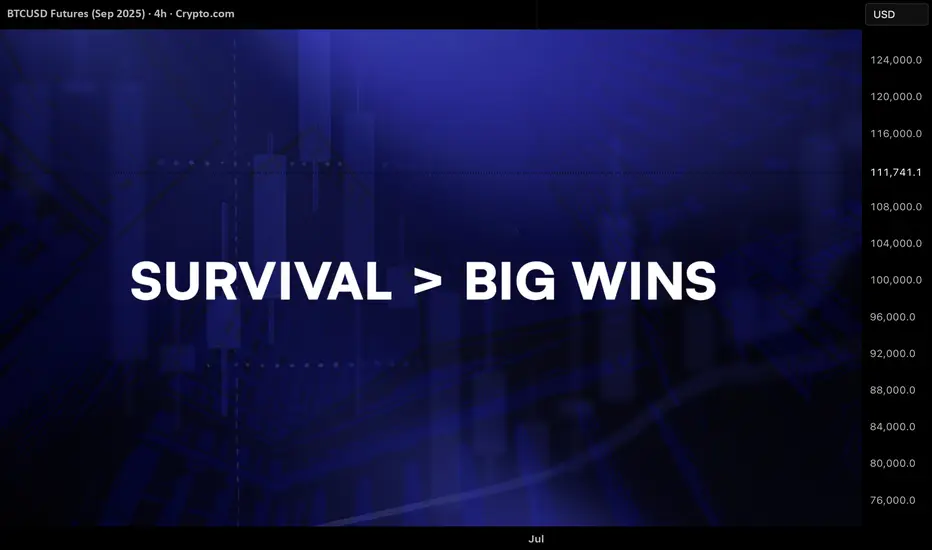Risk Management 2.0: Moving Beyond Basic Stop Losses

1. Introduction
If you ask most new traders how they manage risk, the answer is usually: “I use a stop loss.”
That’s a good start, but it’s far from enough.
Surviving in the markets is not about setting a stop and hoping for the best. It’s about knowing exactly how much you risk per trade, how your account survives losing streaks, and how you protect profits when the market moves in your favor.
Smart traders don’t aim for the biggest win. They aim to survive long enough for their edge to play out.

2. Why Fixed Lot Sizes Break Consistency
The simplest mistake in risk management is trading the same lot size on every trade, no matter the stop loss distance.
Here’s why this is flawed:
A trade with a wide stop risks far more money than intended.
A trade with a tight stop risks very little, but also reduces profit potential.
Over time, results become inconsistent. One loss can wipe out several wins.
Example: On a $10,000 account, a fixed lot might risk $500 on one trade and only $100 on another. Without realizing it, the trader’s statistics no longer add up.
Consistency comes from controlling risk per trade, not per lot size.
3. Position Sizing Models for Professionals
To fix this, professionals adjust their trade size based on account risk and stop loss distance. Three proven models are:
Percent Risk Model (most common)
Volatility-Adjusted Model
Kelly Criterion (advanced)
All three models serve the same purpose: normalize risk so one trade can’t destroy the account.
4. Trade Management: Beyond Entry Risk
Sizing risk correctly is step one. Step two is managing risk dynamically once a trade is open.
Taking Partial Profits
Scale out of part of your position at predefined levels (e.g., 50% at 1R).
Locks in gains and reduces stress, while keeping a runner for bigger moves.
Moving Stop Loss to Breakeven
After price moves in your favor (say +1R), shift your stop to entry.
Guarantees no loss on the remainder.
Avoid moving it too early or you’ll get shaken out.
Trailing Stops
Manually trail below swing lows/highs, or use ATR-based trailing stops.
Purpose: protect profits while letting the trend run.

5.Practical Rules for Risk 2.0
Here’s a simple framework you can apply today:
Decide your risk per trade (1–2%).

If you ask most new traders how they manage risk, the answer is usually: “I use a stop loss.”
That’s a good start, but it’s far from enough.
Surviving in the markets is not about setting a stop and hoping for the best. It’s about knowing exactly how much you risk per trade, how your account survives losing streaks, and how you protect profits when the market moves in your favor.
Smart traders don’t aim for the biggest win. They aim to survive long enough for their edge to play out.
2. Why Fixed Lot Sizes Break Consistency
The simplest mistake in risk management is trading the same lot size on every trade, no matter the stop loss distance.
Here’s why this is flawed:
A trade with a wide stop risks far more money than intended.
A trade with a tight stop risks very little, but also reduces profit potential.
Over time, results become inconsistent. One loss can wipe out several wins.
Example: On a $10,000 account, a fixed lot might risk $500 on one trade and only $100 on another. Without realizing it, the trader’s statistics no longer add up.
Consistency comes from controlling risk per trade, not per lot size.
3. Position Sizing Models for Professionals
To fix this, professionals adjust their trade size based on account risk and stop loss distance. Three proven models are:
Percent Risk Model (most common)
- Risk 1–2% of account equity per trade.
- Position size changes depending on stop distance.
- Ensures every trade risks the same portion of capital.
Volatility-Adjusted Model
- Uses ATR (Average True Range) or market volatility to size positions.
- High volatility = smaller positions. Low volatility = larger positions.
Kelly Criterion (advanced)
- A formula that calculates optimal bet size based on win rate and reward/risk.
- Often used at “half-Kelly” for practical application.
- Useful for advanced traders but aggressive for beginners.
All three models serve the same purpose: normalize risk so one trade can’t destroy the account.
4. Trade Management: Beyond Entry Risk
Sizing risk correctly is step one. Step two is managing risk dynamically once a trade is open.
Taking Partial Profits
Scale out of part of your position at predefined levels (e.g., 50% at 1R).
Locks in gains and reduces stress, while keeping a runner for bigger moves.
Moving Stop Loss to Breakeven
After price moves in your favor (say +1R), shift your stop to entry.
Guarantees no loss on the remainder.
Avoid moving it too early or you’ll get shaken out.
Trailing Stops
Manually trail below swing lows/highs, or use ATR-based trailing stops.
Purpose: protect profits while letting the trend run.
5.Practical Rules for Risk 2.0
Here’s a simple framework you can apply today:
Decide your risk per trade (1–2%).
- Always calculate position size based on stop loss distance.
- Journal each trade with risk taken and whether rules were followed.
- Apply a daily/weekly loss cap.
- Use partials, breakeven stops, and trailing stops to secure profits.
- When followed consistently, these rules transform risk management from theory into practice.
Pubblicazioni correlate
Declinazione di responsabilità
Le informazioni ed i contenuti pubblicati non costituiscono in alcun modo una sollecitazione ad investire o ad operare nei mercati finanziari. Non sono inoltre fornite o supportate da TradingView. Maggiori dettagli nelle Condizioni d'uso.
Pubblicazioni correlate
Declinazione di responsabilità
Le informazioni ed i contenuti pubblicati non costituiscono in alcun modo una sollecitazione ad investire o ad operare nei mercati finanziari. Non sono inoltre fornite o supportate da TradingView. Maggiori dettagli nelle Condizioni d'uso.